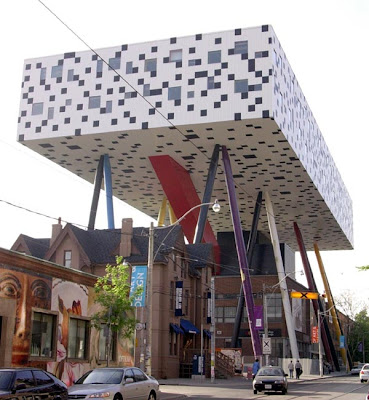This past weekend, I swung by my local mecca of all things printed word, and as always was both struck and disappointed with the selection of architectural titles. One they had in the newish ‘green building’ section at Powell’s was ‘Inspired by Nature – Plants: The Building Botany Connection’ by Bahamon, Perez, and Compello (published by WW Norton). I had seen something about this and bookmarked it for future use, but decided to pick it up. And for anyone whom appreciates the metaphorical abstractions of architecture and vegetation would do well to pick up this one. (NOTE: most images below are not from the book, but are examples and diagram similar to the projects shown therein)

:: image via Amazon
The introduction continues to discuss ideas of plant evolution, as well as delving into some of the analogies between the botanical world and architecture. One idea that is prevalent is the idea of a building as a tree – and particularly the idea of immobility, efficiency, and competition. This spreads beyond form to the arrangements of elements, an analogue that draws the following summary: “Urbanism in architecture and plant sociology in ecology are are disciplines that, as well be demonstrated here, can offer parallel readings of the different forms of coexistence that occupy the planet.”
The intro ends with a overview of the structure of the book, which essentially becomes the functional analogues that are taken from plants and applied to buildings:

:: image via Picassa album by Rich
A further analog is drawn between the idea of plant canopy and the concept of interception and water capture in the World Birding Center by LakeFlato Architects in Mission, Texas.

:: image via LakeFlato
Another idea is the concept of season variation and leaf fall – epitomized in the transitional facade of the Somis Hay Barn by Studio Pali Fekete Architects in Somis, California. The peeling away of the hay bales creates temporal change and constant evolution: “At the end of the fall when it is stacked, the hay is freshly cut and green in color. Over the following months and after the hay has dried and adopted a yellowish color, it is removed and used to feed the cattle.”

:: image via Architectural Record
The elegance of some of the vegetated abstraction is subtle, using forms of nature in artistic ways by modifying or perforating the surface material. One elegant example is the Sfera Building by Claesson Koivisto Rune in Kyoto, Japan. The pattern of cherry blossoms is evocative of Japanese concepts of patterned screens and woodcut engravings.

:: image via Build Blog
There are many more, and I do really like the ideas, but perhaps something is lost in the cultural translation of the ‘buildingbotany connection’ as some of the examples were slightly forced, or less relevant when analyzed further. Also, there was definitely a fair amount of reliance on discrete metaphor to make these links (i.e. building as a tree) – such as Alsop’s Sharp Centre for Design…

:: Sharp Centre for Design, Ontario – image via Archidose
…or quite literal used of plant forms – such as the use of abstract panels and other facade treatments evocative of plants, of which there are many examples in the book, including the Dutch Embassy in Poland by Erick van Egeraat.
:: Dutch Embassy, Poland – image via Architektura
These are definitely some original ideas (or at least a methodology for presenting them) that have gained even more traction in recent months and have been featured here on L+U – as examples such ‘Sakura’ by Mt. Fuji, Mcdonough’s ‘Building as a Tree’ or Maynard’s ‘Tattoo House’ offer some great additional ideas. The other concept I think interesting is the fact that the book is set up as a potential series… Inspired by Nature – with a range of other ideas to include – as there are a catalogue of potential options to run out this theoretical thread.
One final thought… in perhaps an example of Lost in Translation came in reading the bibliographic reference is the Spanish title ‘Arquitectura Vegetal: Analogias entre el Mundo Vegetal y La Arquitectura Contemporanea’ – which from a quick translation is roughly, gasp!… “Vegetal Architecture: Analogies between the Vegetal World and Contemporary Architecture.”
Familar and Brilliant… totally brilliant… and from the sound of it, maybe even more brilliant in the original Spanish…


Hi
Im a nyc landscape architect that is currently researching for masters degree options. what programs based on your experience have a strong background on
ecological design? any help will be appreciated
pd your blog is very informative
Thanks
Definitely not a comprehensive survey, but one’s I know about from personal research are:
– Cal Poly Pomona, Univ. of British Columbia, and Univ. of Washington.
It seems that all programs are becoming more ‘ecological’ in thinking and cirriculum (sensing the trend, as well as driven by faculty I imagine) – and master’s programs often give one the flexibility to pave a path that best suits them. So maybe the faculty and their interests would be a good start as well.
Something for the Land8Lounge discussion and/or a sepearate post – check back for that.